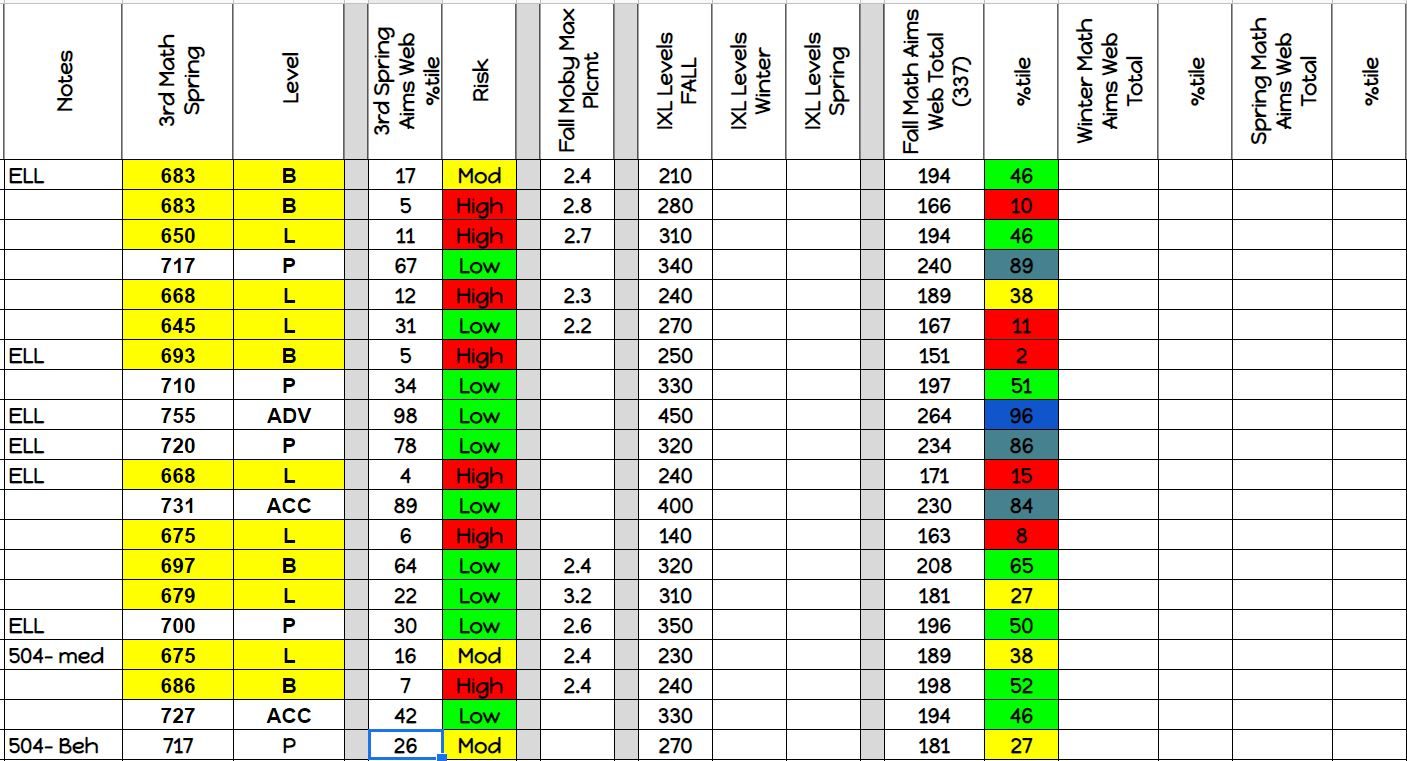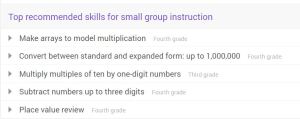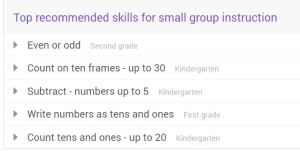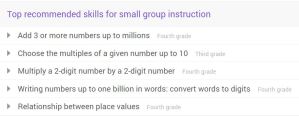Student Data and How We Use It
I want to start this off by telling each of you... Students are more than just data! I believe that with every ounce of my being and have said it time and time again in meetings. With that said, we need to use the data we have on what students know and don't know to help guide our instruction.
All schools are back in session and either just finishing up beginning of year benchmarking or in the thick of it. I personally LOVE looking at data and finding trends, outliers, and seeing the growth of students over time. I know that some teachers do not enjoy looking at data and use what they know from working daily with their students to help them guide instruction. In my opinion, a good teacher uses both.
There are so many assessments out there for benchmarking students and gaining an understanding of where they are in their mathematical knowledge. For me though, nothing will show me what depth of understanding they have better than working one-on-one or in a small group with students. That's one of the reasons I do math stations weekly with my students. (Math Stations post from 2 weeks ago here.)
When I get new students each year I use a Google Sheet to lay out the information from the prior year in regards to performance. I teach 4th grade, so I take their 3rd grade state test score and their end of year benchmarking school from Aims Web and put them into a spreadsheet. I take it all in for starters and see what they show me in the classroom. As we work out way through the beginning of year benchmarks, I continue to add their scores into the spreadsheet.
This year my beginning of year benchmarking programs were: IXL, MOBY MAX, and Aims Web. Below you will see a fake class I created to show the data input.

You can see from the data above in this fake class who did and who did not pass the prior grade level state test, and how they've performed overall on our Aims Web benchmark. I use this data to drive my list of who needs to be Progress Monitored. I progress monitor bi-weekly, so that we can gain more data points than strategic monitoring once a month, but not weekly to cut into core instruction.
My district's benchmarks, IXL and Aims Web, for mathematics allow me to run reports that tell me what the students need. As a grade level, we use the data to put our entire grade level into the mix of who needs what. IXL will even put our kids into groups and state what they need to work on. See the examples below of what IXL told us our 4 different groups needed to work on. The groups also tell us who is in which group. You can see the topics below in the Number Sense domain that each group is working on.
 This group is the group that is is measuring "on grade level" through the different data points we look at. They are playing math games based off of the topics IXL and Aims Web say they need and getting practice on IXL, per district mandate.
This group is the group that is is measuring "on grade level" through the different data points we look at. They are playing math games based off of the topics IXL and Aims Web say they need and getting practice on IXL, per district mandate.
 We have about 15 students in this group level , so we divided them into 3 groups of 5. We wanted to have smaller groups for the instructional part of the intervention time. During the instructional portion of our intervention time, they are working with manipulatives to understand the concepts conceptually before practicing the skills on their own on IXL, per district mandate.
We have about 15 students in this group level , so we divided them into 3 groups of 5. We wanted to have smaller groups for the instructional part of the intervention time. During the instructional portion of our intervention time, they are working with manipulatives to understand the concepts conceptually before practicing the skills on their own on IXL, per district mandate.
 This is the lowest group and we only have 4 students in this group. They are working with manipulatives in a 4:1 setting trying to understand conceptually, while linking it to 4th grade standards. The students then work on their own practicing the same topics they worked on with the teacher on IXL, per district mandate.
This is the lowest group and we only have 4 students in this group. They are working with manipulatives in a 4:1 setting trying to understand conceptually, while linking it to 4th grade standards. The students then work on their own practicing the same topics they worked on with the teacher on IXL, per district mandate.
 This is the highest ability group. We have them with our Gifted Intervention teacher who is targeting these skills through a variety of activities. They then work through lessons recommended to the individual students on IXL that they have been working in their enrichment time, per district mandate.
This is the highest ability group. We have them with our Gifted Intervention teacher who is targeting these skills through a variety of activities. They then work through lessons recommended to the individual students on IXL that they have been working in their enrichment time, per district mandate.
The students needs for each group are also cross checked with what each student shows they need per their individual Aims Web report and what we are seeing in class. Some students score really well on assessments, but don't show us in real-time that they understand a topic or domain. We also see kids that do really well on a topic in class but have been placed in a specific group. Two things happen at this point: we have the flexibility to use what we see in class and what the students show us throughout our math class.
Here you can see part of our Intervention/Enrichment Groups organization. I have only included what our groups are and what interventions we have for what our group of students need at this particular point this school year.


I have included Google links below so you can make your own copy of what we are using in my grade level, in my building to create intervention groups using the data from our beginning of year benchmarks.
As we Progress Monitor our students weekly for ORF (oral reading fluency) and biweekly for NSF (Number Sense Fluency), we pull our students one at a time and have them set a goal for themselves before they take their PM assessment. We then talk with them after their score comes through and have a quick chat about how they did. Goal setting is so important to growing students academically and socially. Give it a try and let us know how it goes!
If you have questions or want to talk about intervention groups, leave us a comment or shoot us an email.